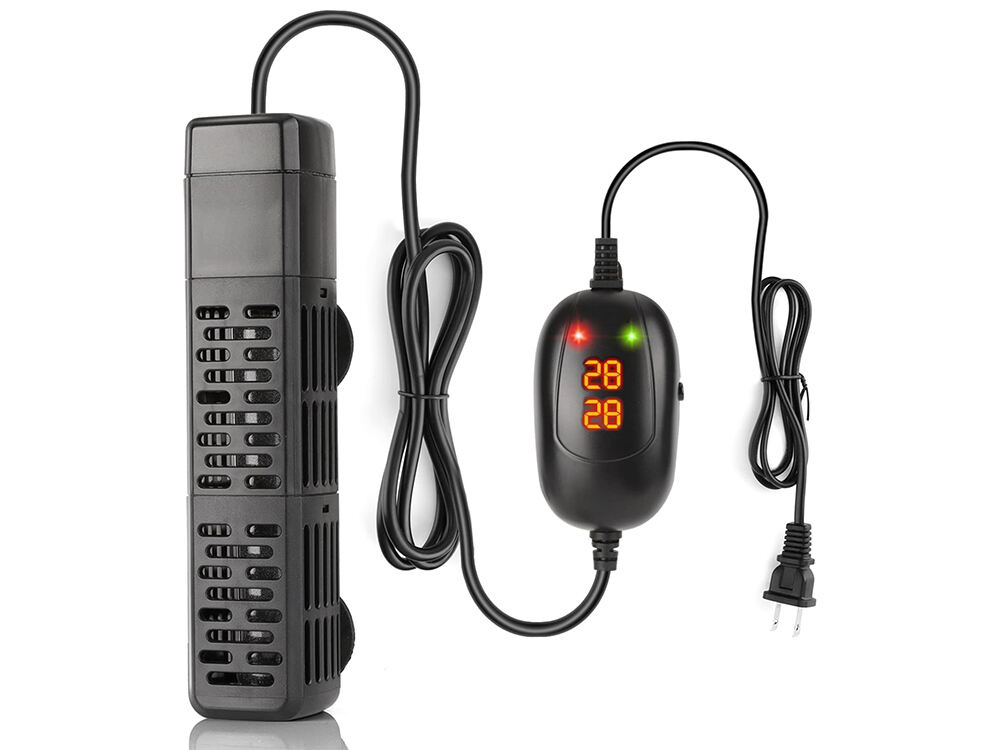An aquarium's environment is crucial to the health and wellbeing of the aquatic life, and every single aspect should be taken care of. An aquarium heater is mandatory for maintaining the correct water temperature for both fish and plants. This article will discuss the functions of aquarium heaters, how to choose the correct one, and how to properly use them, along with other maintenance practices to keep your aquarium thriving.
Managing Temperature Control
One of the really factors to consider when managing an aquarium is temperature. Fish, as well as aquatic plants, have tempered ranges for their levels of productivity. For example, the majority of tropical fish require warmer water of approximately 75-80°F (24-27°C). Conversely, cold water species like goldfish prefer cooler temperatures. Most owners often don’t realize this but temperature fluctuations can lead to excessive stress, illness, and in the worst case scenario, death. An aquarium heater is a huge help as not only does it maintain temperature, it also assists in stabilizing the environment which is key in reducing stress on fish.
Step by Step Guide for Choosing an Aquarium Heater
While selecting an aquarium heater, keep in mind the size of your tank and the specific type of fish you own. Heaters fall into two primary categories: submersible and in-line. Submersible heaters are fixed in the water while in-line heaters are located in the water filter system. For a majority of home aquariums, a submersible heater is the most popular choice. Furthermore, be on the lookout for heaters with adjustable thermostats that enable you to set the temperature based on your specific requirements. As a rule of thumb, a heater for an aquarium should ideally have 5 watts of power for every gallon of water. However, this can change depending on your aquarium's setup and the ambient temperature of the room.
Installing & Setting Up Your Aquarium Heater
For an aquarium heater to function well, proper installation is essential. Install the heater where water circulates well, avoiding areas that receive direct sunlight or water from the filter. To prevent damage, the device will have to be submerged before plugging in the heater. Once plugged in, preset your desired temperature on the thermostat but do not add any fish for a few hours to allow the heater to fully acclimatize. It's also helpful to use a thermometer to keep an eye on the water temperature, to verify that the heater is indeed operational.
Monitoring & Adjusting the Temperature
It is important to keep daily tabs on the aquarium’s temperature, especially when seasons change or after maintenance work. Should any fluctuations be noticed, the heater will need to be adjusted accordingly. Some heaters have built-in thermometers liberating the user from the need to check the temperature, however, an independent thermometer is always good to have. Make sure not to make any drastic changes at once, as this can be detrimental to your fish.
How To Take Care Of Your Aquarium Heater
Taking care of your aquarium requires caring for its heaters. For this, you need to carry out regular inspections of damages, cleaning for algae, and scrubbing the tank once in a while so dirt does not accumulate. Unplug the heater while cleaning and use sponges or soft clothes. Do calibrate so check your axis thermometer against the tank one. When the heater is not up to speed or on fails to maintain a temperature range that matches your parameters, you might have to consider changing it.
Innovations and trends in the field
With the world becoming more tech focused, the aquarium segment of the technology world is not stopping as well. There is also focus on smart heaters which can be connected to WiFi and controlled via mobile phone apps. These add a level of control and conveniences for the user while giving the tanks adequate protection from temperature heightening or dropping. Changes focused on power saving are getting preference so the waters stay green. Being aware of these will allow you to equip your aquarium with better intelligent setup while contributing to the wellness of its inhabitant fish.










